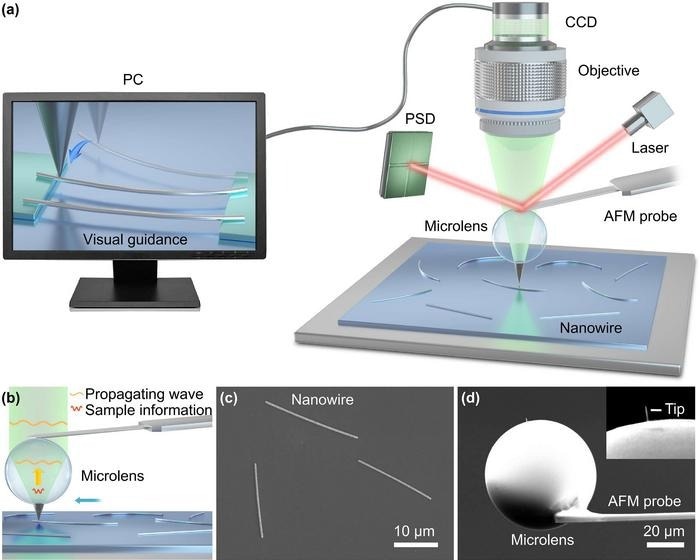A research team from the Shenzhen Institutes of Advanced Technology of the Chinese Academy of Sciences, under the direction of Prof. Hui Yang, created a unique platform combining AFM with microlens-based super-resolution optics in a study published in Nano Research.
 Schematic of the super-resolution observation and synchronous nanomanipulation system. Image Credit: SIAT
Schematic of the super-resolution observation and synchronous nanomanipulation system. Image Credit: SIAT
One of the fundamental methods for manipulating the nanoscale is atomic force microscopy (AFM), which is used in the production of semiconductor devices, biomolecule handling, and nanoparticle assembly, among other fields. During manipulation, real-time, high-resolution in-situ imaging is impossible with conventional AFM systems. This persistent “manipulation blind spot” has a major impact on operational accuracy and effectiveness.
With the use of the platform, synchronous imaging and accurate control of feature-sized targets as small as tens of nanometers are made possible via real-time super-resolution imaging visual guidance during manipulation.
Researchers devised a system that blends super-resolution optical imaging using microlens technology with AFM manipulation. They created a microlens-AFM probe by attaching a microlens to the end of a standard AFM probe cantilever and depositing a diamond tip using a focused ion beam. The AFM system regulates the operating force, speed, and trajectory, while the microlens and AFM optical path system work together to offer real-time feedback, improving nanomanipulation efficiency and precision.
The device improves imaging resolution by more than tenfold while also allowing for real-time optical tracking and simultaneous manipulation of 200-nm silver nanowires under non-destructive circumstances. It also improves manipulation accuracy by more than 50% and increases operating efficiency by about 200%.
The probe's modular design makes it compatible with commercial AFM systems, providing a versatile, cross-disciplinary platform for biosensing, nano-optics, and micro/nano manufacturing research that does not need equipment modification or overhaul.
Journal Reference:
Zhang, T., et al. (2025) Real-time observation and synchronous nanomanipulation platform based on microlens and atomic force microscopy coupling. Nano Research. doi.org/10.26599/NR.2025.94907397.